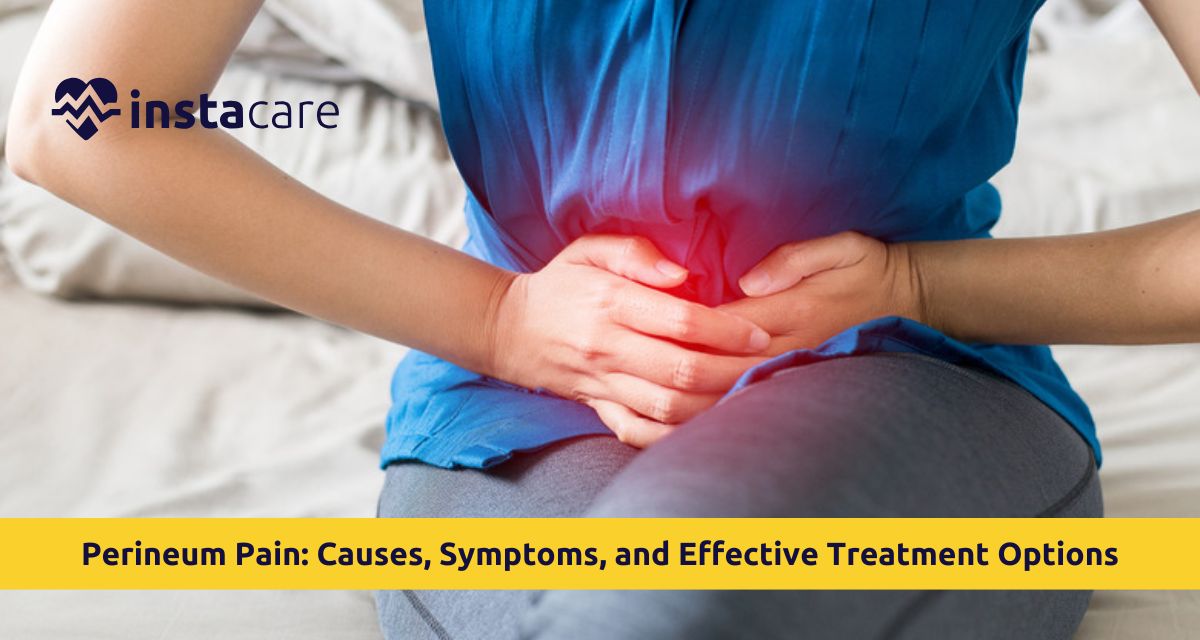What is Perineum Pain?
Common Causes of Perineum Pain
Injury or Trauma
- Bruising or chronic perineal tenderness due to trauma, horseback riding, or bicycle riding.
- Pain, swelling, or laceration of the skin can result from direct trauma.
Infections
- Sexually transmitted infection (STI), urinary tract infection (UTI), and fungal infection may lead to inflammation of the perineum.
- Tenderness with palpation, swelling, and erythema are caused by skin infections.
Childbirth-Related Causes (Female Perineum Pain)
- Vaginal delivery will tear or stretch perineal tissue, resulting in sharp pain in perineum after delivery.
- Delayed healing and chronic pain may result from epidurally trimmed episiotomies.
Prostatitis (Perineum Pain of the Male)
Pelvic Floor Dysfunction
Skin Irritation or Allergies
Nerve Issues
Operative Pain
Perineum Pain Symptoms
- Return of soreness or tenderness.
- Burning with urination or perineum movement.
- Swelling, redness, or bruising that is tender to touch.
- Miserable perineum pain while sitting for extended periods involving the perineum.
- Sexual discomfort.
- perineal discomfort pain during micturition, i.e., pain in the perineum following micturition.
- Evidence of trauma to the perineum in the nature of blood or open wounds in the event of trauma.
Read More: 10 Effective Menstrual Pain Remedies
Determination of the Cause of Perineum Pain
- Medical history: Taking history of recent trauma, childbirth, infection, surgery, or chronic disease.
- Physical exam: Inspection for swelling, tenderness, bruising, or rash over perineal surface.
- Lab work: Urine to rule out infection, STI cultures, and even blood test.
- Imaging tests: Ultrasound or MRI in suspected complications of deep tissue or nerves.
- Pelvic floor exam: Particularly if muscle tightness or weakness is a problem.
Good Perineum Pain Treatment Options
Minor Pain Home Treatments
- Sitz baths warm – melt pain and promote healing.
- Cold compresses – reduce swelling and inflammation.
- Loose cotton briefs to protect against irritating agents.
- Squeaky-clean cleanliness to avoid infection.
Medical Treatments
- Antibiotic or antifungal drug – Bacterial or fungal infection.
- Painkiller drug – Prescription or over-the-counter pain drug for pain alleviation.
- Anti-inflammatory drug – Reduce swelling and ease perineum pain.
- Physical therapy of the pelvic floor – To tighten to function better and with less effort.
More Advanced Procedures
- Nerve blocks – For chronic sharp perineum pain due to nerve entrapment.
- Restrictive surgery – In extremely rare chronic scarring or injury scenarios.
Postpartum Care
Prevention of Perineum Pain
- Wear dry cotton underwear.
- Sit on padded bicycle seats to reduce perineum soreness.
- Condition pelvic floor muscles using Kegel exercises.
- Stay away from soap or scented cleansing agents that can irritate it.
- Safe sex prevents infection.
- Pregnant women must follow medical advice to avert perineal tearing during labor.
When to See a Doctor for Perineal Pain
- Severe swelling or redness after injury.
- Severe perineal burning fever.
- perineum pain after urination or during bowel movement.
- Pain that lasts for several days and increases.
- Discharge, odor, or pus from the perineum.
Conclusion

